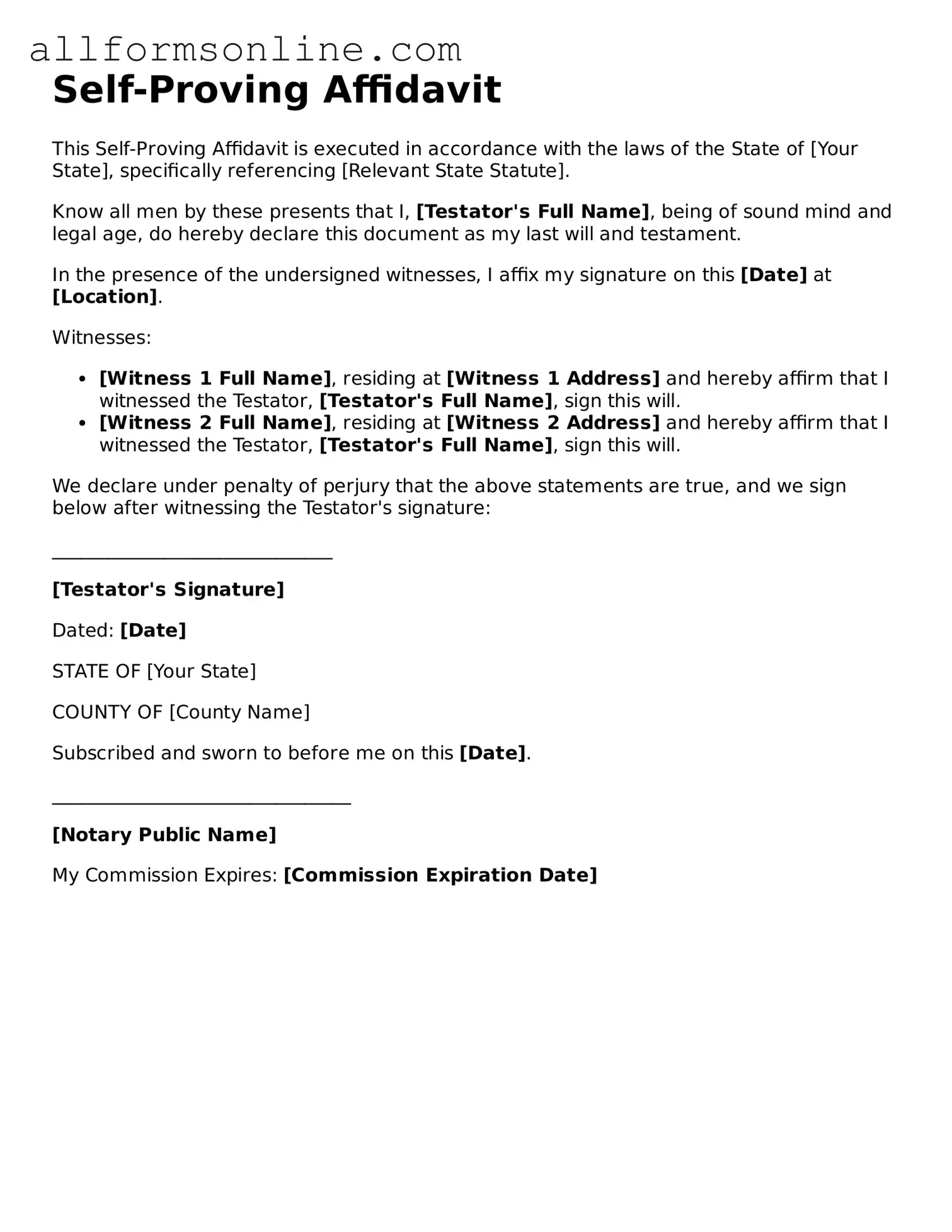What is a Self-Proving Affidavit?
A Self-Proving Affidavit is a legal document that accompanies a will. It serves to affirm the authenticity of the will and the signatures of the testator and witnesses. This affidavit allows the will to be admitted to probate without the need for witnesses to testify in court, simplifying the process and expediting the administration of the estate.
Who can create a Self-Proving Affidavit?
Typically, a Self-Proving Affidavit can be created by the testator, who is the individual making the will, along with the witnesses present at the time of signing. All parties involved must be of sound mind and legal age. It is advisable for individuals to consult with an attorney to ensure that the affidavit meets all legal requirements specific to their jurisdiction.
What information is included in a Self-Proving Affidavit?
The Self-Proving Affidavit generally includes the names and addresses of the testator and witnesses, a statement affirming that the will was signed in the presence of the witnesses, and an oath or affirmation by the witnesses attesting to the validity of the will. This information helps establish the legitimacy of the document and can be crucial during the probate process.
Is a Self-Proving Affidavit mandatory?
No, a Self-Proving Affidavit is not mandatory for a will to be valid. However, including one can significantly ease the probate process. Without it, witnesses may need to be located and called to testify, which can prolong the proceedings and create additional complications. For many, the benefits of having a Self-Proving Affidavit outweigh the extra step in the will preparation process.
How do I execute a Self-Proving Affidavit?
To execute a Self-Proving Affidavit, the testator and witnesses must sign the affidavit in front of a notary public. It is essential that all parties are present at the same time during the signing. Once executed, the affidavit should be attached to the will and stored in a safe place. Proper execution ensures that the affidavit can be used effectively during the probate process.
